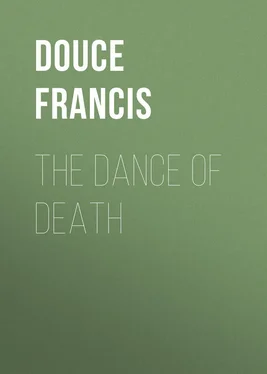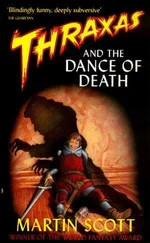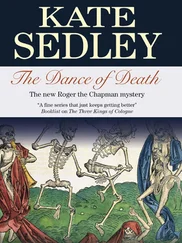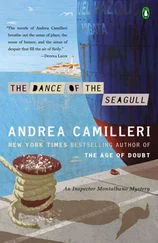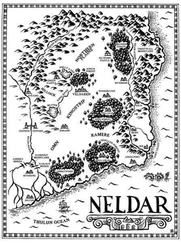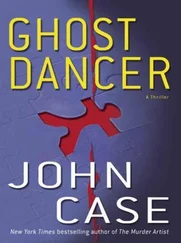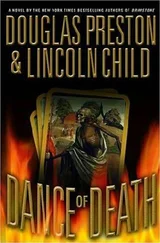Francis Douce - The Dance of Death
Здесь есть возможность читать онлайн «Francis Douce - The Dance of Death» — ознакомительный отрывок электронной книги совершенно бесплатно, а после прочтения отрывка купить полную версию. В некоторых случаях можно слушать аудио, скачать через торрент в формате fb2 и присутствует краткое содержание. Жанр: foreign_antique, foreign_prose, на английском языке. Описание произведения, (предисловие) а так же отзывы посетителей доступны на портале библиотеки ЛибКат.
- Название:The Dance of Death
- Автор:
- Жанр:
- Год:неизвестен
- ISBN:нет данных
- Рейтинг книги:5 / 5. Голосов: 1
-
Избранное:Добавить в избранное
- Отзывы:
-
Ваша оценка:
- 100
- 1
- 2
- 3
- 4
- 5
The Dance of Death: краткое содержание, описание и аннотация
Предлагаем к чтению аннотацию, описание, краткое содержание или предисловие (зависит от того, что написал сам автор книги «The Dance of Death»). Если вы не нашли необходимую информацию о книге — напишите в комментариях, мы постараемся отыскать её.
The Dance of Death — читать онлайн ознакомительный отрывок
Ниже представлен текст книги, разбитый по страницам. Система сохранения места последней прочитанной страницы, позволяет с удобством читать онлайн бесплатно книгу «The Dance of Death», без необходимости каждый раз заново искать на чём Вы остановились. Поставьте закладку, и сможете в любой момент перейти на страницу, на которой закончили чтение.
Интервал:
Закладка:
The next Macaber Dance, in point of date, was the celebrated one at Basle, which has employed the pens and multiplied the errors of many writers and travellers. It was placed under cover in a sort of shed in the church-yard of the Dominican convent. It has been remarked by one very competent to know the fact, that nearly all the convents of the Dominicans had a Dance of Death. 54 54 Urtisii epitom. Hist. Basiliensis, 1522, 8vo.
As these friars were preachers by profession, the subject must have been exceedingly useful in supplying texts and matter for their sermons. The present Dance is said to have been painted at the instance of the prelates who assisted at the Grand Council of Basle, that lasted from 1431 to 1443; and in allusion, as supposed, to a plague that happened during its continuance. Plagues have also been assigned as the causes of other Dances of Death; but there is no foundation whatever for such an opinion, as is demonstrable from what has been already stated; and it has been also successfully combated by M. Peignot, who is nevertheless a little at variance with himself, when he afterwards introduces a conjecture that the painter of the first Dance imitated the violent motions and contortions of those affected by the plague in the dancing attitudes of the figures of Death. 55 55 Peignot Recherches, xxvi-xxix.
The name of the original painter of this Basle work is unknown, and will probably ever remain so, for no dependance can be had on some vague conjectures, that without the smallest appearance of accuracy have been hazarded concerning it. It is on record that the old painting having become greatly injured by the ravages of time, John Hugh Klauber, an eminent painter at Basle, was employed to repair it in the year 1568, as appears from a Latin inscription placed on it at the time. This painter is said to have covered the decayed fresco with oil, and to have succeeded so well that no difference between his work and the original could be perceived. He was instructed to add the portrait of the celebrated Oecolampadius in the act of preaching, in commemoration of his interference in the Reformation, that had not very long before taken place. He likewise introduced at the end of the painting, portraits of himself, his wife Barbara Hallerin, and their little son Hans Birich Klauber. The following inscription, placed on the painting on this occasion, is preserved in Hentzner’s Itinerary, and elsewhere.
Sebastiano Doppenstenio, Casparo Clugio Coss.
Bonaventura à Bruno, Jacobo Rudio Tribb. Pl.
Hunc mortales chorum fabulæ, temporis injuria vitiatum
Lucas Gebhart, Iodoc. Pfister. Georgius Sporlinus
Hujus loci Ædiles.
Integritati suæ restituendum curavere
Ut qui vocalis picturæ divina monita securius audiunt
Mutæ saltem poëseos miserab. spectaculo
Ad seriam philosophiam excitentur.
ΟΡΑΤΕΛΟΣ ΜΑΚΡΟΥ ΒΙΟΥ
ΑΡΧΗΝ ΟΡΑΜΑΚΑΡΙΟΥ
CI  I LXIIX.
I LXIIX.
In the year 1616 a further reparation took place, and some alterations in the design are said to have been then made. The above inscription, with an addition only of the names of the then existing magistrates of the city, was continued. A short time before, Mathew Merian the elder, a celebrated topographical draftsman, had fortunately copied the older painting, of which he is supposed to have first published engravings in 1621, with all the inscriptions under the respective characters that were then remaining, but these could not possibly be the same in many respects that existed before the Reformation, and which are entirely lost. A proof of this may be gathered from the lines of the Pope’s answer to Death, whom he is thus made to apostrophize: “Shall it be said that I, a God upon earth, a successor of St. Peter, a powerful prince, and a learned doctor, shall endure thy insolent summons, or that, in obedience to thy decree, I should be compelled to ascertain whether the keys which I now possess will open for me the gates of Paradise?” None of the inscriptions relating to the Pope in other ancient paintings before the Reformation approach in the least to language of this kind.
Merian speaks of a tradition that in the original painting the portrait of Pope Felix V. was introduced, as well as those of the Emperor Sigismund and Duke Albert II. all of whom were present at the council; but admitting this to have been the fact, their respective features would scarcely remain after the subsequent alterations and repairs that took place.
That intelligent traveller, Mons. Blainville, saw this painting in January, 1707. He states that as it had been much injured by the weather, and many of the figures effaced, the government caused it to be retouched by a painter, whom they imagined to be capable of repairing the ravages it had sustained, but that his execution was so miserable that they had much better have let it alone than to have had it so wretchedly bungled. He wholly rejects any retouching by Holbein. He particularizes two of the most remarkable subjects, namely, the fat jolly cook, whom Death seizes by the hand, carrying on his shoulder a spit with a capon ready larded, which he looks upon with a wishful eye, as if he regretted being obliged to set out before it was quite roasted. The other figure is that of the blind beggar led by his dog, whom Death snaps up with one hand, and with the other cuts the string by which the dog was tied to his master’s arm. 56 56 Travels, i. 376.
The very absurd ascription of the Basle painting to the pencil of Hans Holbein, who was born near a century afterwards, has been adopted by several tourists, who have copied the errors of their predecessors, without taking the pains to make the necessary enquiries, or possessing the means of obtaining correct information. The name of Holbein, therefore, as combined with this painting, must be wholly laid aside, for there is no evidence that he was even employed to retouch it, as some have inadvertently stated; it was altogether a work unworthy of his talents, nor does it, even in its latest state, exhibit the smallest indication of his style of painting. This matter will be resumed hereafter, but in the mean time it may be necessary to correct the mistake of that truly learned and meritorious writer, John George Keysler, who, in his instructive and entertaining travels, has inadvertently stated that the Basle painting was executed by Hans Bock or Bok, a celebrated artist of that city; 57 57 Travels, i. 138, edit. 4to.
but it is well known that this person was not born till the year 1584.
The Basle painting is no longer in existence; for on the 2d of August, 1806, and for reasons that have not been precisely ascertained, an infuriated mob, in which were several women, who carried lanterns to light the expedition, tumultuously burst the inclosure which contained the painting, tore it piecemeal from the walls, and in a very short space of time completely succeeded in its total demolition, a few fragments only being still preserved in the collection of Counsellor Vischer at his castle of Wildensheim, near Basle. This account of its destruction is recorded in Millin’s Magazin Encyclopédique among the nouvelles littéraires for that year; but the Etrenne Helvétique for the above year has given a different account of the matter; it states that the painting having been once more renovated in the year 1703, fell afterwards into great decay, being entirely peeled from the wall – that this circumstance had, in some degree, arisen from the occupation of the cloister by a ropemaker – that the wall having been found to stand much in the way of some new buildings erected near the spot, the magistrates ventured, but not without much hesitation, to remove the cloister with its painting altogether in the year 1805 – and that this occasioned some disturbance in the city among the common people, but more particularly with those who had resided in its neighbourhood, and conceived a renewed attachment to the painting.
Читать дальшеИнтервал:
Закладка:
Похожие книги на «The Dance of Death»
Представляем Вашему вниманию похожие книги на «The Dance of Death» списком для выбора. Мы отобрали схожую по названию и смыслу литературу в надежде предоставить читателям больше вариантов отыскать новые, интересные, ещё непрочитанные произведения.
Обсуждение, отзывы о книге «The Dance of Death» и просто собственные мнения читателей. Оставьте ваши комментарии, напишите, что Вы думаете о произведении, его смысле или главных героях. Укажите что конкретно понравилось, а что нет, и почему Вы так считаете.
